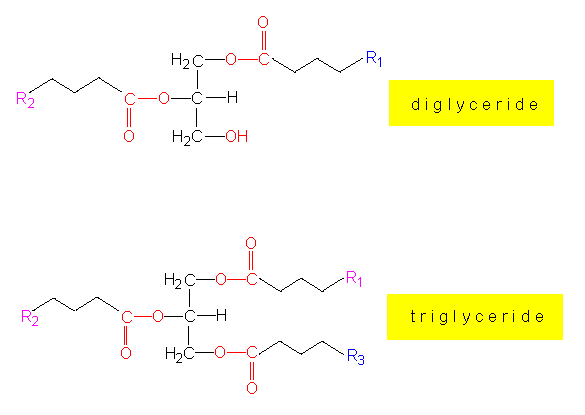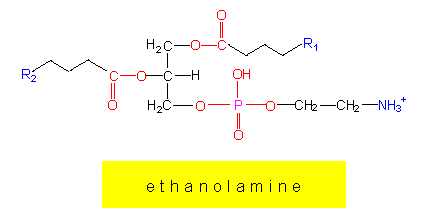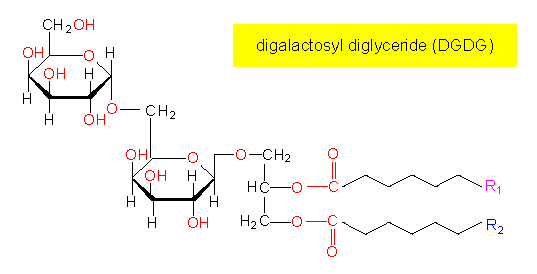
Botany online 1996-2004. No further update, only historical document of botanical science!
Lipids are a heterogeneous collection of components that share
only one property: they are easily dissolved in organic solvents but
can only hardly or not at all be dissolved in water. Among the lipids
are:
fats and oils
waxes
phospholipids
glycolipids and
steroids
Fats and oils are complexes of saturated or unsaturated fatty acids and glycerol that are linked via ester bonds. The number of C-atoms in fatty acids is always even (mostly 16 and 18). This is caused by the biosynthesis of fatty acids where C2-unities are combined to chains.

oleic acid
Among the unsaturated fatty acids are
compounds with one, two or three double bonds. Depending on how
many fatty acid residues are carried by a glycerol-residue, it
is distinguished between mono-, di- and triglycerides.


Triglycerides make up the chief amount of storage
fats. Lipids with short fatty acid residues take part in
the species-specific flavour of several fruits.
The esters of fatty acids with long-chained alcohols
are called waxes.
Their fatty acids are composed of rather long chains (24
- 36 C-atoms).
Phospholipids are counted among the complex lipids. They are essential structural elements of membranes. They have two fatty acids residues linked to glycerol. Depending on the molecule residue that is linked to the third hydroxyl-group of the glycerol via phosphate, it is distinguished between phosphatides, plasmalogenes and sphingolipids.


In glycolipids, the glycerol-residue carries a sugar instead of a phosphate. They are characteristic for plastid membranes.



A completely different group, the
steroids, are
also counted among the lipids. They will be dealt
with later.
cholesterol
© Peter v. Sengbusch - b-online@botanik.uni-hamburg.de